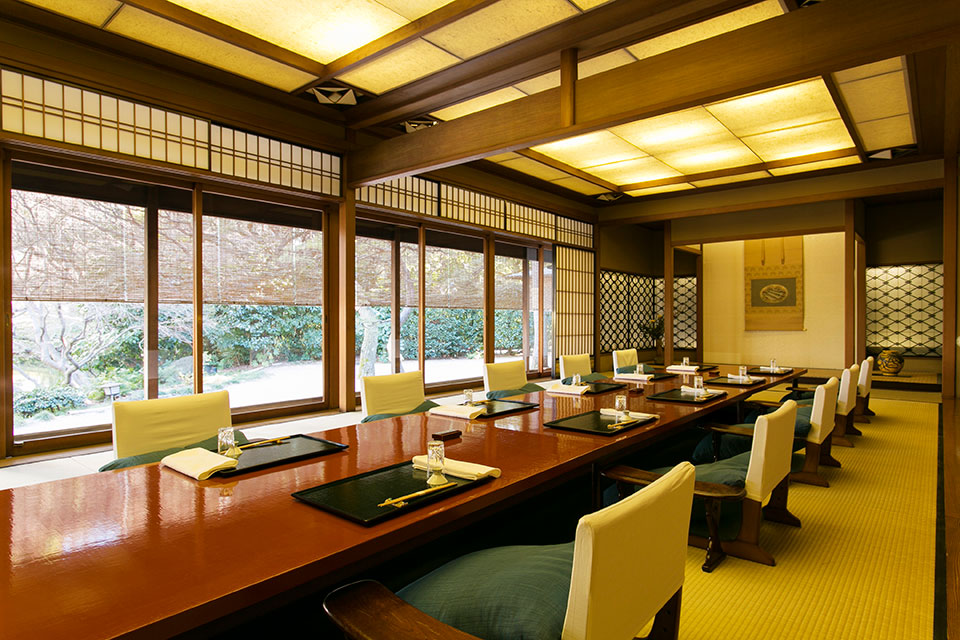Kaiseki is the most formal style of Japanese cuisine, usually eaten in high-class restaurants on special occasions. The word Kaiseki originates from Buddhist priests in Zen training, who placed hot stones, "seki", in the pockets of their robes, "kai", to help them bear their fasting. Using the freshest ingredients of the season and prepared with subtle seasonings to enhance their flavors and textures, each dish is an elaborate presentation of sublime simplicity.
The following is an example of a Kaiseki-style course meal offered at NADAMAN "Sazanka-so".
| SAKIZUKE | (Appetizer eaten with sake) |
|---|---|
| ZENSAI | (Appetizer) |
| SUIMONO | (Clear soup) |
| TSUKURI | (Mainly sashimi) |
| NIMONO | (Simmered dish) |
| YAKIMONO | (Broiled fish) |
| SUNOMONO | (Vinegared dish) |
| GOHAN | (Rice) |
| TOMEWAN | (Miso soup) |
| KOUNOMONO | (Assorted pickled vegetables) |
| KUDAMONO | (Fruit) |
| KANMI | (Japanese dessert and tea) |



